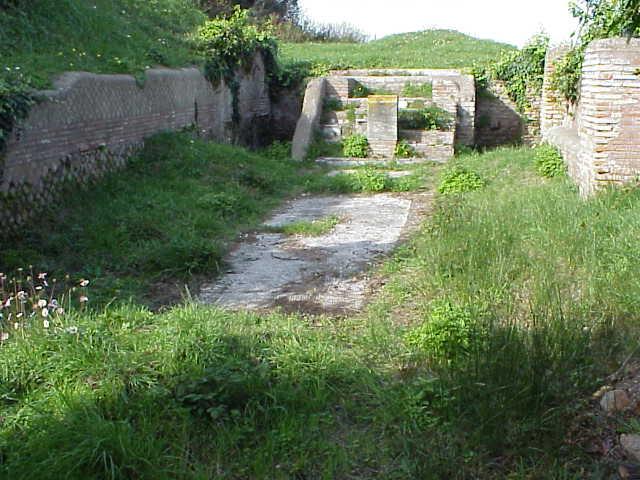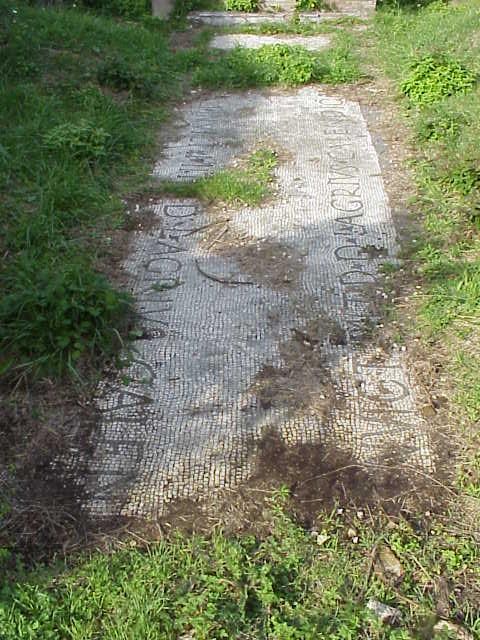Biography
of Lucius Agrius Calendius
- Lucius Agrius Calendius was a brother of the Mitreo del Palazzo Imperiale.
- Active c. 162 in Ostia, Latium (Italia).
TNMP 114
The Agrius family name in Italy is mostly attested in central-southern Latium and in Campania. However, it was most widespread in Africa, especially in the Proconsular province, in the Severan age, although it is known from the 1st century AD.
In Ostia thirteen personages with this gentilitium are known (nine men and four women), four of them with the pre-name Lucius. In addition to the personage mentioned here, Ostiense epigraphy has handed down to us the presence of a L. Agrius Marcianus in CIL, XIV 251, member of the plebs of the professional college of lenuncularii of Ostia in the year 192 AD; of a [L(ucius) A]gris L. f. Priscus, as probably to be integrated, among the patrons of the religious college of the dendrophs of the Magna Mater, CIL, XIV 281, in 203 A° and finally of a L. Agrius Primus granting a locus sepolturae for the late C. Mundicius Felix, CIL, XIV 1383. Excluding this last inscription, which is late, it is interesting to note that the presence in Ostia of the Luci Agrii is concentrated around the final years of the 2nd century AD and the beginning of the 3rd century AD, therefore in the Severan age, and that almost all the persons known from the evidence we have received are involved in collegiate activities. In this regard, it is necessary to point out that within the same chronological range there are two other personages with the same family name but without a prefix, Agrius Chrysion and Agrius Hermes, both registered in 198 AD in the fourteenth decuria of the fabri tignuarii of Ostia (CIL, XIV 4569), a statue base dedicated by the numerus caligatorum to the emperor Septimius Severus).
As for the surname Calendio, of Latin origin, derived from calendar days, it is generally poorly attested even in its variant with the initial K. It occurs in CIL seventeen times, two of which are borne by persons of servile status, mostly in Africa (thirteen times of the total). In Ostia it occurs three times, in the inscription presented here and in CIL, XIV 4569 (with K, fragmentary). Interesting is the personage in CIL, 4569, a member of the fifteenth decuria of the fabri tignuarii of Ostia in the year 198 AD, whose name and family name are not preserved. As Becatti rightly pointed out, it is uncertain, given the fragmentary nature of the name, whether this Calendio can be identified with the dedicator of the floor of the mithraeum. On closer inspection, the presence of the punctuation mark before the surname, the analysis of the spaces and the fact that the family name of the two Agrii mentioned in the same inscription is written in full suggest that this hypothesis should be definitively ruled out, preferring rather a shortened nomen with two or three letters, for example Cl(audius), lul(ius), Ael(ius), the most frequent cases.
On the basis of the epigraphic evidence Licordari has rightly assumed that the persons known in Ostia with this surname were African. This would not be surprising, since the presence of a strong African group in the colony, especially linked to the annona and the grain trade, is well documented, starting from the middle of the 2nd century and in the years of the empire of the African Severan family; visible evidence of these activities can be found in the contemporary mosaics of the so-called Piazzale delle Corporazioni. On the basis of the epigraphic evidence, the presence of a strong African community in Ostia is not surprising. Piazzale delle Corporazioni.
On the basis of the onomastic analysis conducted so far, one could therefore admit an African origin for L. Agrius Calendio. On the other hand, not much can be said about his legal status. The fact that this surname is widespread mainly in the servile sector and that in Ostia the presence of Lucii Agrii is attested for the most part with Grecanic surnames, a possible indication of libertine rank, and enrolled in professional and religious colleges that are concentrated between the second and third centuries AD, may suggest that he was a freedman descending from freedmen, probably linked, like the previous ones, to large African families involved in the ration trade.
—Raffaella Marchesini (2013) Sacra peregrina ad Ostia e Porto.
Mentions
Floor mosaic of Mitreo del Palazzo Imperiale
It bears an inscription repeated on each side of the podia.
TNMM 492


